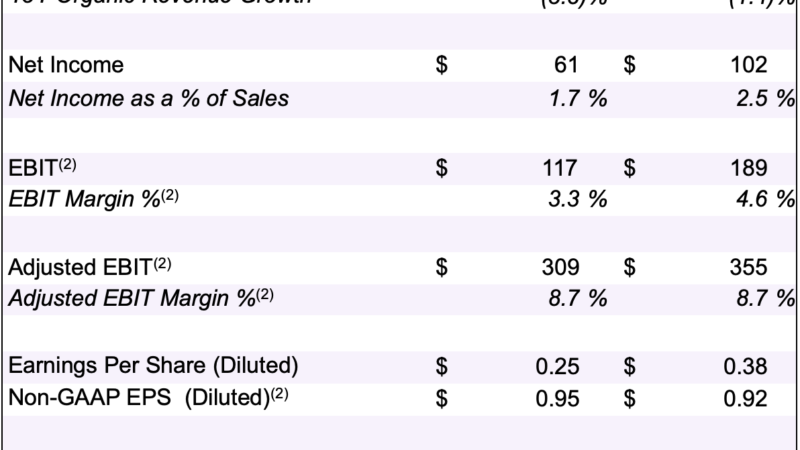How Technology is Disrupting the Construction Industry – Visual Capitalist
If you’ve ever flown cross-country in a window seat, chances are, the bright lights at night have caught your eye. From above, the world tells its own story—as concentrated pockets of bright light keep the world’s economy thriving.
Today’s visualization relies on data compiled by CityLab researchers to identify the world’s largest megaregions. The team defines megaregions as:
- Areas of continuous light, based on the latest night satellite imagery
- Capturing metro areas or networks of metro areas, with a combined population of 5 million or higher
- Generating economic output (GDP) of over $300 billion, on a PPP basis
The satellite imagery comes from the NOAA, while the base data for economic output is calculated from Oxford Economics via Brookings’ Global Metro Monitor 2018.
It’s worth pointing out that each megaregion may not be connected by specific trade relationships. Rather, satellite data highlights the proximity between these rough but useful regional estimates contributing to the global economy—and supercities are at the heart of it.
From Megalopolis to Megaregion
Throughout history, academics have described vast, interlinked urban regions as a ‘megalopolis’, or ‘megapolis’. Economic geographer Jean Gottman popularized the Greek term, referring to the booming and unprecedented urbanization in Bos-Wash—the northeast stretch from Boston and New York down to Washington, D.C.:
This region has indeed a “personality” of its own […] Every city in this region spreads out far and wide around its original nucleus.
By looking at adjacent metropolitan areas rather than country-level data, it can help provide an entirely new perspective on the global distribution of economic activity.
Where in the world are the most powerful urban economic clusters today?
The Largest Megaregions Today
The world’s economy is a sum of its parts. Each megaregion contributes significantly to the global growth engine, but arguably, certain areas pull more weight than others.
| Megaregion | Cities | Region | Population | Economic Output (EO) | EO per Capita |
|---|---|---|---|---|---|
| Total | 602.2M | $28,135B | $46,720 | ||
| 1. Bos-Wash | New York, Washington, D.C., Boston | North America | 47.6M | $3,650B | $76,681 |
| 2. Par-Am-Mun | Paris, Amsterdam, Brussels, Munich | Europe | 43.5M | $2,505B | $57,586 |
| 3. Chi-Pitts | Chicago, Detroit, Cleveland, Pittsburgh | North America | 32.9M | $2,130B | $64,742 |
| 4. Greater Tokyo | Tokyo | Asia | 39.1M | $1,800B | $46,036 |
| 5. SoCal | Los Angeles, San Diego | North America | 22M | $1,424B | $64,727 |
| 6. Seoul-San | Seoul, Busan | Asia | 35.5M | $1,325B | $37,324 |
| 7. Texas Triangle | Dallas, Houston, San Antonio, Austin | North America | 18.4M | $1,227B | $66,685 |
| 8. Beijing | Beijing, Tianjin | Asia | 37.4M | $1,226B | $32,781 |
| 9. Lon-Leed-Chester | London, Leeds, Manchester | Europe | 22.6M | $1,177B | $52,080 |
| 10. Hong-Shen | Hong Kong, Shenzhen | Asia | 19.5M | $1,043B | $53,487 |
| 11. NorCal | San Francisco, San Jose | North America | 10.8M | $925B | $85,648 |
| 12. Shanghai | Shanghai, Hangzhou | Asia | 24.2M | $892B | $36,860 |
| 13. Taipei | Taipei | Asia | 16.7M | $827B | $49,521 |
| 14. São Paolo | São Paolo | South America | 33.5M | $780B | $23,284 |
| 15. Char-Lanta | Charlotte, Atlanta | North America | 10.5M | $656B | $62,476 |
| 16. Cascadia | Seattle, Portland | North America | 8.8M | $627B | $71,250 |
| 17. Ista-Burs | Istanbul, Bursa | MENA | 14.8M | $626B | $42,297 |
| 18. Vienna-Budapest | Vienna, Budapest | Europe | 12.8M | $555B | $43,359 |
| 19. Mexico City | Mexico City | North America | 24.5M | $524B | $21,388 |
| 20. Rome-Mil-Tur | Rome, Milan, Turin | Europe | 13.8M | $513B | $37,174 |
| 21. Singa-Lumpur | Singapore, Kuala Lumpur | Asia | 12.7M | $493B | $38,819 |
| 22. Cairo-Aviv | Cairo, Tel Aviv | MENA | 19.8M | $472B | $23,838 |
| 23. So-Flo | Miami, Tampa | North America | 9.1M | $470B | $51,648 |
| 24. Abu-Dubai | Abu Dhabi, Dubai | MENA | 5M | $431B | $86,200 |
| 25. Osaka-Nagoya (tied) | Osaka, Nagoya | Asia | 9.1M | $424B | $46,593 |
| 25. Tor-Buff-Chester (tied) | Toronto, Buffalo, Rochester | North America | 8.5M | $424B | $49,882 |
| 27. Delhi-Lahore | New Delhi, Lahore | Asia | 27.9M | $417B | $14,946 |
| 28. Barcelona-Lyon | Barcelona, Lyon | Europe | 7M | $323B | $46,143 |
| 29. Shandong | Jinan, Zibo, Dongying | Asia | 14.2M | $249B | $17,535 |
Altogether, these powerhouses bring in over $28 trillion in economic output.
Unsurprisingly, Bos-Wash reigns supreme even today, with $3.6 trillion in economic output, over 13% of the total. The corridor hosts some of the highest-paying sectors: information technology, finance, and professional services.
The largest city in Brazil, São Paulo, is the only city in the Southern Hemisphere to make the list. The city was once heavily reliant on manufacturing and trade, but the $780 billion city economy is now embracing its role as a nascent financial hub.
On the other side of the world, the cluster of Asian megaregions combines for $8.7 trillion in total economic output. Of these, Greater Tokyo in Japan is the largest, while Shandong might be a name that fewer people are familiar with. Sandwiched between Beijing and Shanghai, the coastal province houses multiple high-tech industrial and export processing zones.
The data is even more interesting when broken down into economic output per capita—Abu-Dubai churns out an impressive $86,200 per person. Meanwhile, Delhi-Lahore is lowest on the per-capita list, at $14,946 per person across nearly 28 million people.
Where To Next?
This trend shows no sign of slowing down, as megacities are on the rise in the coming decade. Eventually, more Indian and African megaregions will make its way onto this list, led by cities like Lagos and Chennai.
Stay tuned to Visual Capitalist for a North America-specific outlook coming soon, and a deep dive into the biggest factors contributing to the growth of these megaregions.
Thank you!
Given email address is already subscribed, thank you!
Please provide a valid email address.
Please complete the CAPTCHA.
Oops. Something went wrong. Please try again later.







